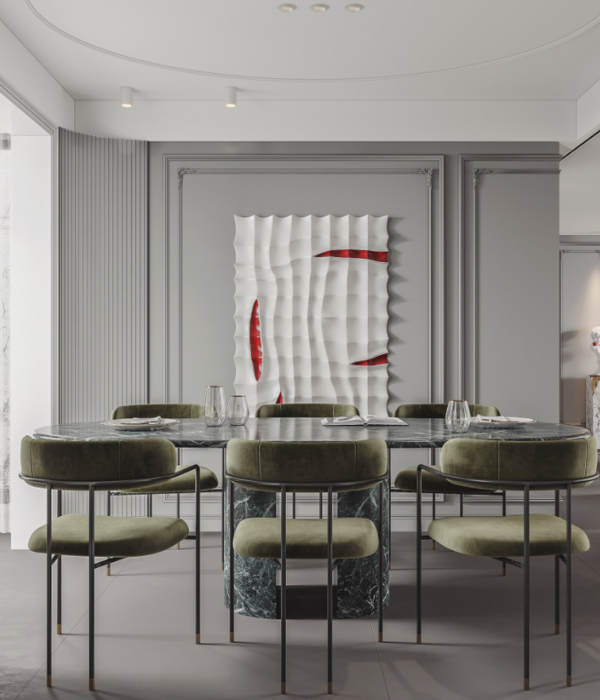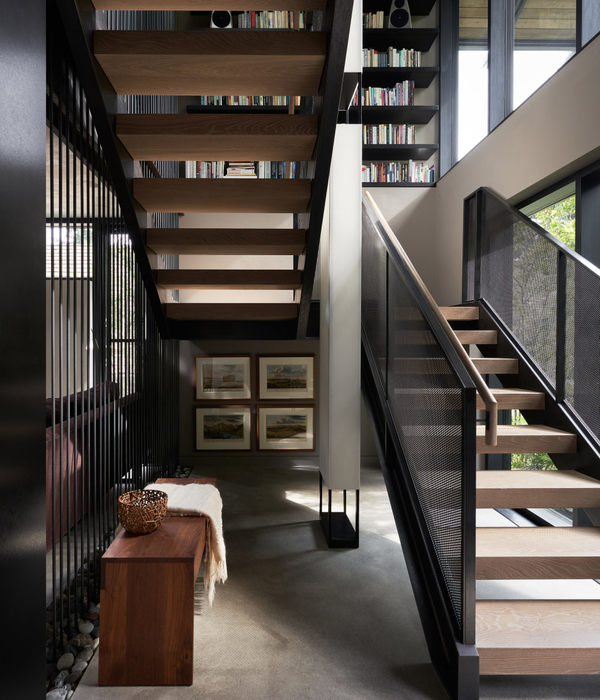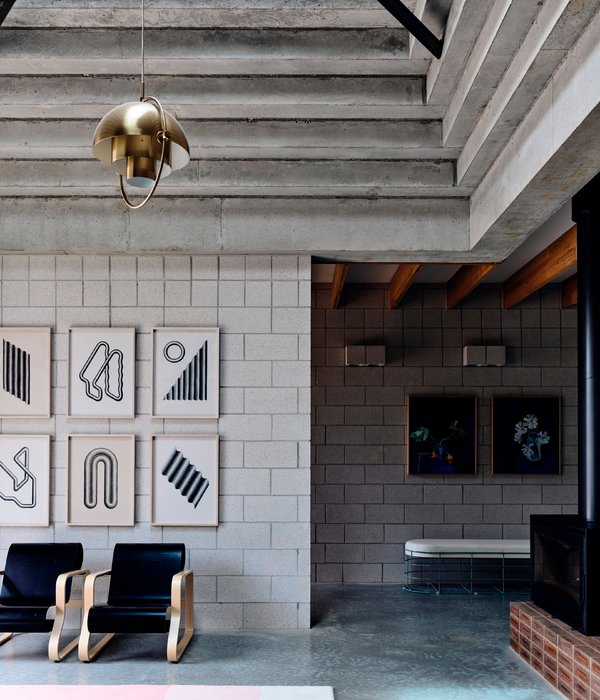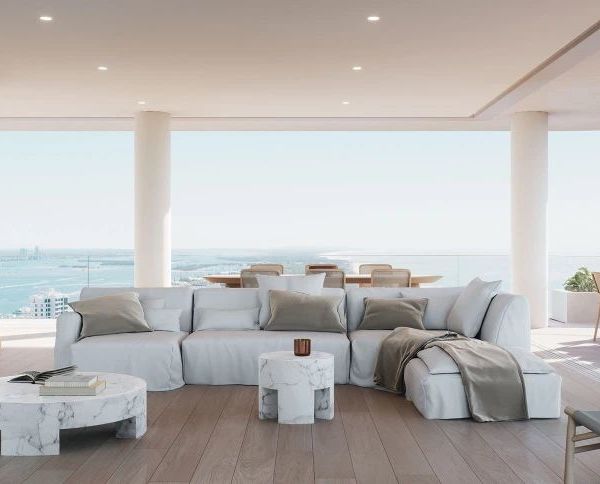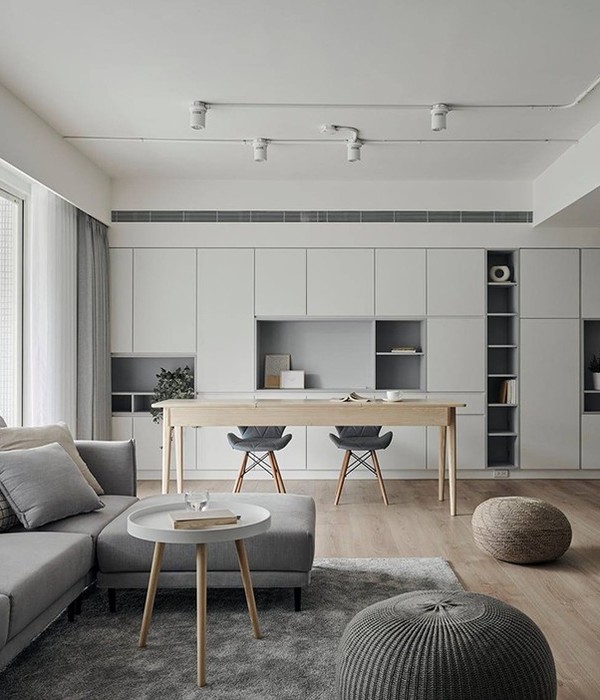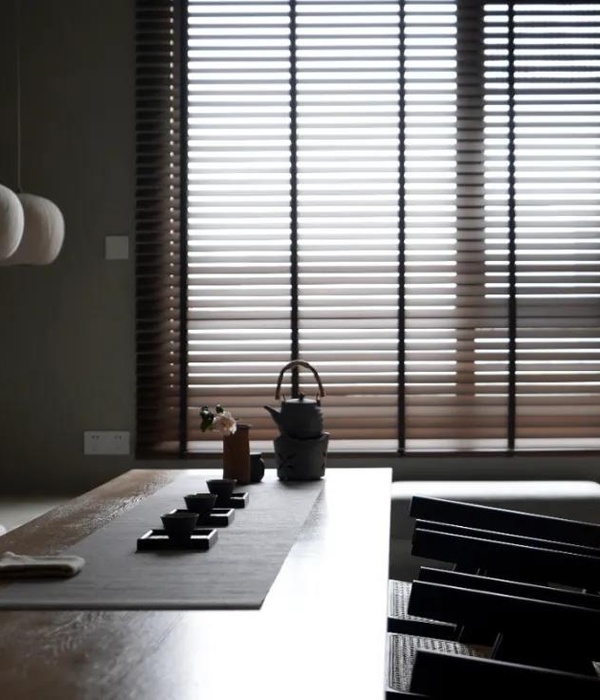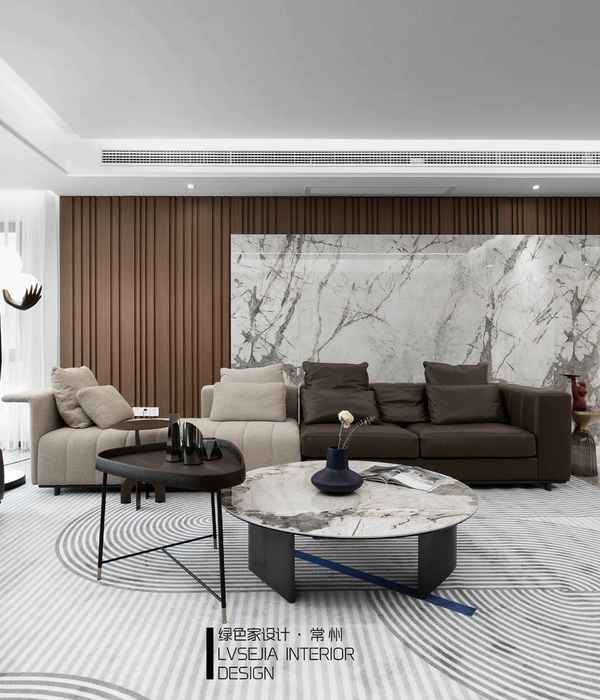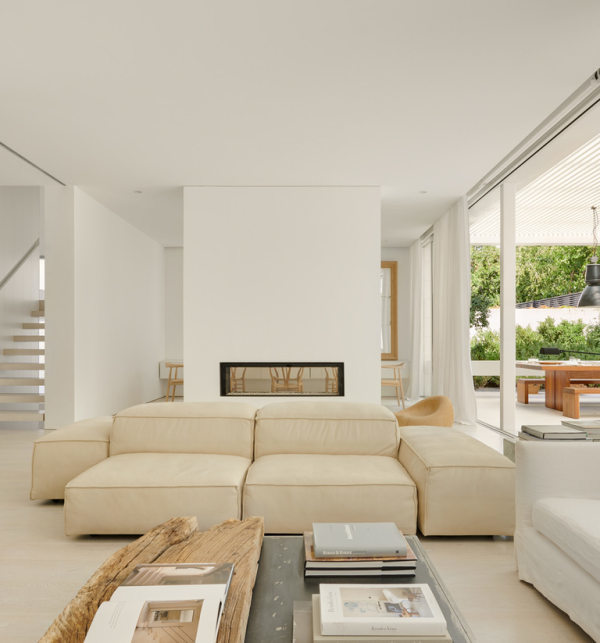"It’s important as a model community. They pushed the boundaries of design when it was first built and here they are again, at the same site, pushing the boundaries yet again. This is the kind of project students should be engaged with more – the longer term, rigorous investigation of how design really engages sustainable systems. Students get to see what really works, and what doesn’t"- 2014 Awards Jury
“典型社区是很重要的。在设计初期,边界就被挤压,现在在同一地点,边界再次被挤压。该项目的学生应该对如何设计真正可持续系统进行严格调查。学生可以看到起作用和无作用的设施” – 2014 评审团
2014ASLA
A New Norris House and Landscape By
University of Tennessee College of Architecture and Design
新诺里斯房屋和景观是位于田纳西州诺里斯的一个大学的主导设计/构建/评估项目。房屋白金项目的LEED是一个将可持续水系统集成到景观设计的案例研究。设计目标包括:收集和处理家用和景观用雨水;屋内灰水渗透;雨水位置的100%管理。居住三年和数据收集提供的结果培育了田纳西州的雨水和灰水条规的新交流。
A New Norris House and Landscape is a university-led design/build/evaluate project located in Norris, Tennessee. The LEED for Homes Platinum project is a case study for integrating sustainable water systems into designed landscapes. Design goals include: collecting and treating rainwater for in-home and landscape use; infiltrating greywater on site; and managing 100% of site stormwater. Three years of residency and data collection produced results that are fostering new conversations about rainwater and greywater regulations in Tennessee.
▲ 新诺里斯房屋(NNH)景观将地方人类享受的位置结合起来,如雨水和灰水渗透以及雨水处理和重用。持续的监测和评估支持修改关于允许住宅雨水和灰水使用的城市和国家法规。
The New Norris House (NNH) landscape integrates places for human enjoyment with processes such as stormwater and greywater infiltration and rainwater treatment and reuse. Ongoing monitoring and evaluation support revisions to city and state regulations concerning permissible residential rainwater and greywater uses.
Photo Credit: Robert Batey Photography
概述
位于田纳西州诺里斯的新诺里斯房屋和景观(NNH)是一个成功的、由大学主导的设计/构建/评估项目。由建筑学系和规划署发起,项目集纳了来自建筑、景观建筑、室内设计、工程、环境研究和生物系统工程部门的老师和学生。房屋白金项目的LEED获得了设计、教育学和环境性能的奖项,包括EPA P3奖,NCARB创意奖,CSA设计|建设奖,RADA优秀奖,AIA海湾国家优秀奖以及最近的AIA COTE十大绿色项目奖。
一个为期三年的居住和水系统监测项目于2014年5月结束。这个项目描述了一年的雨水质量和频率数据以及灰水数量数据。针对一年间实际收集的数据,对水和能源使用进行评估。数据证明我们能够收集、处理并提供雨水01)依据EPA人类健康安全标准对人的接触是安全的02)符合饮用水标准和03)有足够的数量以满足30%的二人家庭的需要。初步灰水数据表明它能够安全有效的渗透到景观种植床中。
项目历史
诺里斯是一个由田纳西流域管理局(TVA)建于1933年的模范社区,它是诺里斯大坝建设项目的一部分。TVA是一个科技和社会实验,其实证研究对峡谷地区的居民进行了访问。富兰克林罗斯福总统宣布,“沿着两条线进行工作,即物理土地、水、土壤和它的人性面,这两者都是紧密相连的。”(Van西2001)这个新政村庄的一个关键特性是原始的“诺里斯房屋”,为现代,高效的生活进行了一系列的实验性别墅设计。TVA尝试了新的建筑材料、施工技术、服务和设备。对设计、成本和性能进行研究,并通过TVA记录房屋的适当目标和广泛的新技术的应用。此外,TVA利用环境资源保护和计划进行研究。诺里斯房屋坐落在大景观区,促进了可步行性,创建了一个友好的社区并节约和保护了自然资源,比如水、土壤和森林产品。
诺里斯城镇的独特乡土景观是先进规划和设计的历史。NNH纪念了诺里斯项目75周年,并抓住机会重新考虑景观、社区和家庭的形状。项目提供了一个再次发展环境、技术和社会力量的联合的独特案例。
房屋和景观
NNH追求的供水系统的性能和设计意图从市政基础设施中获得了较大的独立性。设计目标包括:收集和处理家用和景观用雨水;屋内灰水渗透;雨水位置的100%管理,并将可持续水系统的景观元素集成到一个历史性住宅区的建筑物中。
这个项目超越了样板房和景观的产物。国家和地方法规目前禁止处理雨水来用作家用,该项目的实现要求改革法规对绿色发展的约束。这个过程包括修正诺里斯的法令,允许利用雨水,并开始一个有关国家发布允许住宅灰水处理的许可的新监管。田纳西州环境和保护部门(TDEC)的项目团队进行了两年工作,获得了灰水系统的实验许可,它将确保安全的操作和可靠的监控以及数据的采集。自这个项目开始起,诺里斯市TDEC项目团队和诺里斯水务委员会进行了合作,允许设计的灰水系统永久留在某个地方,并且具有所有权转让的操作许可。该法令允许当NNH使诺里斯市的准则具有永久性时,可以使用雨水处理系统。由TDED进行的新诺里斯房屋和景观的案例研究和研究成果促进了发展,主张了TDEC田纳西州的政策修正。
雨水聚集和处理:在NNH中的宗旨、设计描述和标准水目标始于公共和私人服务之间的适当平衡问题,因为这涉及到安全、方便、高效、环保的水资源利用。项目团队致力于找到一个解决方案来满足临时许可证的规定,并且其运作不需要居民进行繁重的维护。该团队还获得了用于冲厕所,洗衣服和外部软管水龙头的处理雨水使用的差异。
收集的样本水质测试在两个实验室中进行:饮用水国家认证实验室和大学实验室。迄今为止,由NNH收集的雨水样本符合EPA监管、二级监管和不受监管的饮用水标准。雨水处理系统每月平均提供800加仑的处理雨水,用于家里和外部水龙头。100%的溢流雨水渗透在四梯田雨水园中。
灰水渗透床:目标、设计描述和标准类似于供水目标,它在公共和私人服务之间找到了一个平衡。家庭灰水来自浴室水槽、淋浴和洗衣机,他们渗透在一个植被渗滤床中。现有的下水道可以直接排走黑水。灰水管理的主要好处包括减少用于运输、在中央设备中处理废水以及当地地下水通过渗透重复利用所需的市政能源。
方法和结果
我们咨询了技术顾问,他们透露了床饱和的重要性,它可以保证灰水地下
▲地理和社会环境
诺里斯于1933年由田纳西流域管理局(TVA)建造并作为诺里斯大坝建设的一部分。TVA是一个科技和社会实验,其方法通过当地实证研究与该地区居民共享获得。
Geographic and social context
Norris was constructed in 1933 by the Tennessee Valley Authority (TVA) as part of Norris Dam construction. The TVA was a technological and social experiment in which methods informed by local, empirical research were shared with residents of the region.
Photo Credit: Authors
▲一个历史性的社区
团队回顾了适合这种独特的社区和景观的理念并提出一个21st c.新诺里斯房屋,它对环境和社会挑战以及技术机会的响应都是常见的和新颖的。
A historic community
The team revisited the ideals that shaped this unique community and landscape to propose a 21st c. New Norris House, one that responds to environmental and societal challenges and technological opportunities that are both familiar and new.
Photo Credit: Authors
▲整合水资源系统
将雨水收集、灰水处理和雨水渗透无缝地集成到景观设计中,创造一个功能齐全和令人愉悦的景观。
Integrated water resource systems
Rainwater harvesting, greywater treatment, and stormwater infiltration are seamlessly integrated into the landscape design, creating a functional and enjoyable landscape.
Photo Credit: Ken McCown, Authors
评价:雨水供应
雨水来自房顶并收集在400加仑的水箱中,进行过滤以便用于家庭和景观灌溉。测试端口允许研究人员比较处理前和处理后的用于市政供应的雨水样品。
Evaluation: Water supply
Rainwater from the home’s 900sf roof is collected in a 400-gallon cistern, filtered, and used in the home and landscape. Test ports allow researchers to sample rainwater pre- and post- treatment for comparison to the municipal supply.
Photo Credit: Authors
▲评价:供水质量
每个月平均收集和处理815加仑的雨水供给家庭使用。实验结果表明,该处理雨水是人类接触的符合EPA人类健康标准的安全雨水。
Evaluation: Water supply quality
Photo Credit: Authors
评价:水供应数量
在第一年的研究中,9755加仑的雨水被用在家庭用水中,剩下的落在屋顶上的11485加仑被用来灌溉菜园或渗透到梯田雨水园。
Evaluation: Water supply quantity
In the first year of study, 9,755 gallons of rainwater were used in the home. The remaining 11,485 gallons that fell on the roof were used as irrigation for the vegetable garden or infiltrated into the terraced rain gardens.
Photo Credit: Authors
▲结果:城市水减少
通过利用在家中和大自然中收获的雨水,NNH减少了平均有两个人的家庭的77.6%的城市用水量。
Results: City water reduction
By using harvested and treated rainwater in the home and landscape, NNH reduced city water consumption by 77.6% as compared to an average two-person house.
Photo Credit: Authors
评价:灰水数量
灰水来自淋浴、浴室水槽和洗衣机,它们被输送到一个最高处理床平台的地下入口中。数据显示,灰水仍然残留在床的次表层中,即使雨水饱和了土壤。
Evaluation: Greywater quantity
Greywater from the shower, bathroom sink, and clothes washer is piped to a subsurface inlet in the uppermost terrace of the treatment beds. Data shows that greywater remains within the subsurface layers of the bed, even with stormwater saturated soil.
Photo Credit: Authors
▲结果:废水处理减少
灰水不需要移动到污水处理厂处理。这可以节省能源并充实地下水位,同时提供一个枝繁叶茂的后院栖息地。
Results: Waste water treatment reduction
Greywater treated on site does not have to be moved to and processed by a wastewater treatment plant. This saves energy and recharges the water table while providing lush backyard habitat.
Photo Credit: Authors
▲ 运作的植物:雨水和栖息地
通过收集纸板种植建立了草地。矮生当地野生植物和多年生植物是友善的,它们可以吸收雨水并提供栖息地。
Plants at work: Stormwater and habitat
The meadow was established by planting through collected cardboard. Low-growing native grasses and perennials are neighborhood friendly, absorb stormwater, and provide habitat.
Photo Credit: Authors
▲工作场所中的植物:性能和体验
设计团队渴望用一个温馨的住宅来平衡项目的技术方面。
Plants at work: Performance and experience
The design team aspired to balance the technological aspects of the project with a welcoming residential landscape.
Photo Credit: Robert Batey Photography
▲新连接
项目要求团队需要面对和解决技术、科学挑战以及当前限制绿色建筑的法律、社会、和美学问题。参与的学生将对下一代的景观建筑从业者起到推动作用。
New connections
The project required that the team confront and resolve not only technological and scientific challenges; but also legal, social, and aesthetic issues that currently restrict green construction. Involved students will advance the next generation of landscape architecture practitioners.
Photo Credit: Authors
▲交流
NNH网站提供了一个实时指示板,显示了能源使用并于当地居民保持联系。用户手册提供了LEED信用信息和维护项目,并且团队定期举办旅游和服务学习活动。
Communication
The NNH website features a real-time dashboard showing energy usage, and the residents maintain a blog. A users manual provides LEED credit information and maintenance items, and the team hosts regular tours and service learning events.
Photo Credit: Authors
▲在田纳西州的监管环境要求示范项目提供可靠的数据和积极的用户体验。NNH供水系统的文档导致了政策的变化,这将使可持续水实践获得允许并变得司空见惯。
The regulatory climate in Tennessee demands demonstration projects that provide reliable data and positive user experiences. Documentation of NNH water systems has led to policy changes that will make sustainable water practices not only permissible but hopefully commonplace.
Photo Credit: Robert Batey Photography
Overview
A New Norris House and Landscape (NNH) is an award-winning, university-led design/build/evaluate project located in Norris, Tennessee. Initiated by the School of Architecture and Planning Department, the project engages faculty and students from architecture, landscape architecture, interior design, engineering, environmental studies, and biosystems engineering departments. The LEED for Homes Platinum project received awards for design, pedagogy, and environmental performance, including the EPA P3 Award, the NCARB Prize for the Creative Integration of Research and Practice, the ACSA Design|Build Award, a RADA Merit Award, an AIA Gulf States Award of Merit, and most recently was recipient of an AIA COTE Top Ten Green Projects Award.
Project History
Norris is a model community constructed in 1933 by the Tennessee Valley Authority (TVA) as part of the Norris Dam construction project. The TVA was a technological and social experiment in which methods informed by local, empirical research were made accessible to the residents of the valley region. President Franklin D. Roosevelt declared, “the work proceeds along two lines, both of which are intimately connected – the physical land and water and soil end of it, and the human side of it.” (Van West 2001)A key feature of this New Deal village is the original “Norris House,” a series of experimental cottages designed for modern, efficient living. Designers responded to vernacular dwellings, yet the TVA experimented with new building materials, construction techniques, services and equipment. Designs, costs, and performance were studied and recorded by the TVA with the goal of appropriate and broad adoption of new technologies in housing. Additionally, the TVA utilized research on environmental resource conservation and planning. Norris homes were situated into the larger landscape to promote walkability, create a neighborly community, and to conserve and protect natural resources such as water, soil, and forest products.
Underlying the Town of Norris’ picturesque vernacular landscape is a history of progressive planning and design. A NNH commemorates the 75th anniversary of the Norris Project and seizes the opportunity to reconsider the shape of landscapes, communities, and homes today. The project provides a unique case study for once again making visible the powerful union of environmental, technological, and social forces.
An Integrated House and Landscape
The NNH pursues complimentary performance and design intentions where water systems provide greater independence from municipal infrastructure. Design goals include: collecting and treating rainwater for in-home and landscape use; infiltrating greywater on site; managing 100% of site stormwater; and integrating landscape elements of sustainable water systems into the fabric of a historic residential neighborhood.
The project goes beyond creation of a model home and landscape. As state and local codes currently prohibit treated rainwater use in the home, realization of the project required reforming regulatory constraints that limit green development. The process included revision to Norris’ ordinances to allow treated rainwater use and started a new regulatory conversation concerning state issued permitting for residential greywater treatment. The project team worked with the Tennessee Department of Environment and Conservation (TDEC) for two years to obtain experimental permits for the greywater system that would ensure safe operations and responsible monitoring and data collection. Experimental permits were to remain in place for only the duration of the study. As of this entry, the project team, TDEC, the City of Norris, and the Norris Water Commission are working together on deed restriction language that will allow the designed greywater system to remain in place in perpetuity, and to transfer the operation permits with ownership transfers. The ordinance allowing rainwater treatment and use systems at the NNH will also be made permanent in City of Norris’ code. The New Norris House and landscape case study and research findings are catalyzing development of and advocacy for policy revisions in Tennessee by TDEC.
Rainwater Harvesting and Treatment: Objectives, design description, and criteria
Water goals at the NNH began with questions surrounding the appropriate balance between public and private services as they relate to safe, convenient, efficient and environmentally responsible water use. The project team worked to find a solution that satisfied the stipulations of the temporary permits and would function without onerous maintenance by the residents. The team also obtained variances for use of treated rainwater solely for toilet flushing, clothes washing and exterior hose faucets.
Water quality of collected samples is tested at two laboratories: a state certified drinking water laboratory and a university laboratory. To date,
更多请至:
{{item.text_origin}}


